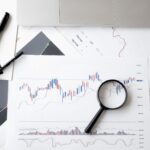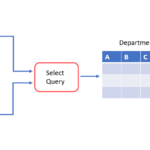Data visualization is a powerful tool that transforms raw data into meaningful insights. As businesses become increasingly data-driven, understanding the different types of data visualization is essential. In this post, we’ll delve into two major categories: batch data visualization and real-time data visualization. We’ll explore their differences, use cases, and how to integrate both to maximize your data strategy.
Understanding Batch Data Visualization
Batch data visualization involves processing and visualizing data at set intervals. This approach is ideal for historical analysis, trend spotting, and making strategic decisions based on past data.
Key Characteristics:
Periodic Updates: Data is collected, processed, and visualized at specific intervals, such as daily, weekly, or monthly.
Historical Analysis: Focuses on past data to identify trends and patterns.
Tools: Common tools include Grafieks, Tableau, Power BI, and Excel.
Use Cases:
Business Reporting: Generating monthly sales reports or quarterly performance reviews.
Trend Analysis: Identifying long-term trends in customer behavior or market dynamics.
Financial Forecasting: Analyzing historical financial data to forecast future performance.
Example:
Imagine a retail company using batch data visualization to analyze quarterly sales performance. By visualizing data from the past few quarters, they can identify seasonal trends and adjust their inventory and marketing strategies accordingly.
Exploring Real-Time Data Visualization
Real-time data visualization involves continuously updating data in real-time or near real-time. This approach is essential for applications that require immediate insights and actions.
Key Characteristics:
Continuous Updates: Data is constantly updated, often within seconds or minutes.
Immediate Insights: Provides up-to-the-minute information, allowing for quick decision-making.
Tools: Common tools include Grafieks, Grafana, Kibana, and D3.js.
Use Cases:
Monitoring Systems: Keeping track of server performance, network traffic, or application health.
Stock Market Analysis: Analyzing stock prices and trading volumes in real-time to make timely investment decisions.
IoT Applications: Monitoring data from connected devices, such as sensors and smart meters, to detect anomalies or optimize operations.
Example:
A financial services firm uses real-time data visualization to monitor stock prices and trading volumes. Traders can make quick buy or sell decisions based on the latest market data, gaining a competitive edge.
Batch vs. Real-Time Visualization: When to Use Each
Understanding when to use batch or real-time data visualization depends on your specific needs and objectives.
Batch Data Visualization:
Strategic Planning: Ideal for long-term planning and historical analysis.
Resource Management: Less resource-intensive, suitable for situations where immediate data isn’t crucial.
Real-Time Data Visualization:
Operational Monitoring: Essential for monitoring systems that require immediate attention.
Timely Decision Making: Crucial for scenarios where quick decisions are necessary based on the latest data.
Combining Both:
In many cases, the best approach is to integrate both batch and real-time data visualization. This allows organizations to leverage the strengths of each method.
Example:
A healthcare provider might use real-time data visualization to monitor patient vital signs and batch data visualization to analyze long-term health trends. This combined approach ensures immediate response to critical situations while also providing insights for strategic health planning.
Best Practices for Effective Data Visualization
Whether you’re using batch or real-time data visualization, adhering to best practices is crucial for creating meaningful and actionable visualizations.
Clarity and Simplicity:
Keep It Simple: Avoid clutter and focus on the most important data points.
Use Clear Labels: Ensure that all labels and legends are easy to understand.
Choose the Right Chart Type:
Match the Data: Use chart types that best represent your data. For example, use line charts for trends over time and bar charts for comparisons.
Interactive Elements:
Enhance Engagement: Use interactive elements like filters and drill-downs to allow users to explore the data.
Consistency:
Standardize Formats: Use consistent colors, fonts, and styles across your visualizations to create a cohesive look.
Conclusion
Batch and real-time data visualization each offer unique benefits and are suited to different scenarios. By understanding their differences and knowing when to use each, you can harness the power of data visualization to drive informed decisions and strategic insights. Integrating both approaches where appropriate can provide a comprehensive view of your data, combining historical context with immediate relevance.
Grafieks provides you best of both world. Whether you are dealing with batch data or real-time data streams, Grafieks enables you to create dynamic and interactive visualizations, helping you turn complex data into clear, actionable insights.

